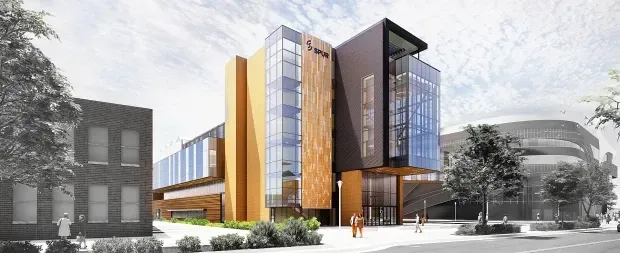Q: Tell us about your work at the West Virginia Department of Education.
A: I coordinate STEM, computer science and the geographical information system for the West Virginia Department of Education. This involves statewide cooperation among public, private and higher education institutions. It’s an exciting time!
Q: In 2020, you took part in planning the fall virtual conference of the West Virginia Science Teachers Association (WVSTA). What aspects were you involved with?
A: The 2020 WVSTA Conference ended my two-year term as president of that organization. Our board planned the conference together. I must give a shout out to our new president, Josh Revels, who took on much of the vendor organization and logistics. It was a truly collaborative project driven by a group that plans a large, in-person conference every year.
Our goal was to create a one-day experience that could support our educators with the challenges they were facing at the time, namely remote learning. Much information about our virtual conference can be found here: https://www.wvsta.org/
Q: As mentioned above, the conference was held virtually and included speakers, breakout sessions and sponsors. How was each aspect of the conference handled/presented?
A: We approached our virtual conference in the same manner that we approach our in-person conference. We created four “rooms” for concurrent sessions, as well as larger “rooms” for our large meeting and our keynote presentation.
Our approach was to create an accessible online event that didn’t create Zoom fatigue. Each room was a Zoom meeting that we kept open for the entire day. Each room had two hosts. Just like our in-person conference, we did a call for sessions, and we divided the sessions up into rooms that had similar themes.
We had 45-minute sessions, starting on the hour for six hours with a social and informational session first thing in the morning, a lunchtime keynote and a closing business meeting. The schedule can be found here: https://www.wvsta.org/wp-content/uploads/2020/10/WVSTA_Sessions_nolinks.pdf.
We still produced our program but added the Zoom links to our regular “session matrix,” which became the schedule linked above.
Participants registered ahead of time, and in the days prior to our conference were sent a schedule with links to each room. Participants moved from room to room as they needed.
Registration was $25 and included a T-shirt (a yearly tradition) as well as a mask and a pen. Additionally, our vendors sent materials to be shared with participants. All of our materials to be sent to participants were collected by one board member, who then packed, with some volunteer assistance, envelopes for every participant.
A local company graciously offered to do our mailing as a donation, so our costs for registration needed to cover only the actual items in the envelope and the shipping materials. The envelopes were mailed out about three weeks after the conference to allow for last-minute registrations. Everyone was excited to receive their special envelope full of goodies.
Many presenters had items to share, so we created Google drives to allow for materials to be shared with the participants. This link was shared with all participants, and presenters shared materials even after the conference.
Vendors registered for $50. For their registration they received the ability to mail us material to be sent to our participants; they were able to submit a video demonstrating their product or resource; and they received a list of those who wanted to be added to vendor mailing lists.
We created a vendor scavenger hunt that could be completed by watching each vendor video. Those who completed the scavenger hunt were entered into a drawing to receive a full registration at next year’s conference (this is also a yearly tradition).
Q: What did you learn from participating in this event that would inform you on planning for a future virtual conference?
A: I believe that what brought us the most success was the simplicity with which everything was planned. Participants knew where to go and how to navigate to the sessions. We provided 15-minute breaks between sessions to allow everyone to stretch their legs.
Our goal was to connect our members to timely resources, not to completely replicate our usual three-day conference in a virtual environment. I believe we were successful.
Q: What advice would you give to others who are confronted with conference planning at this difficult time?
A: I would keep it simple and be mindful of your audience. We knew that our members could not give more than one day, and we knew that the one day couldn’t go late into the night. We planned enough content to engage, but not so much as to wear anyone out.
Q: Is there anything else you can tell us about virtual conference planning – or attending?
A: I have attended many conferences now where I needed to stay on screen for many hours a day. That doesn’t work. We need to take breaks, and, if in our homes, attend to the goings-on of a home.
Please look at our website and let me know if you need additional information, or if I can answer any questions. It was a very successful event and a great way to close out my presidency.





